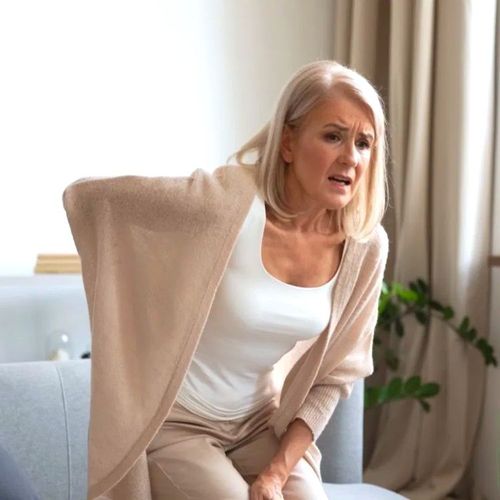Calcium alone won't protect you from osteopenia—early osteoporosis. Most women—as well as men—who are past age 50 know that they are at risk for osteoporosis, the leading cause of bone fractures in older adults. But few older adults realize that they also are at risk for a precursor to osteoporosis known as osteopenia.
New finding: Estimates suggest that half of all women over age 45 and about 30% of men of the same age group have the mild bone loss that characterizes osteopenia.
Painful bone fractures, which are commonly associated with osteoporosis, also can occur in people who have osteopenia. These fractures can cause spinal deformities...hand or wrist disability... and severe hip injury.
SAY GOODBYE TO BONE
In women and men, new bone is constantly being produced and old bone broken down in a process called remodeling.
Until recently, doctors believed that a woman's peak bone-building years began in her childhood and extended to her 20s or 30s.
New finding: Bone growth slows significantly about 10 years earlier than previously thought.
For women, when estrogen levels decline at menopause, bone loss accelerates greatly. In the first five years after menopause, some women lose up to 25% of bone density.
Typically, men start to lose bone 10 years later than women. Testosterone deficiency and the use of certain steroid medications, such as prednisone (Deltasone), are some of the most common causes.
RISK FACTORS
A sedentary lifestyle, not getting enough bone-building calcium and vitamin D, and low body weight in women (less than 127 pounds) are the main causes of osteopenia.
Other key risk factors...
- Very low-calorie diets. Men and women who severely restrict calories—for example, consuming fewer than 1,000 to 1,200 calories daily—may not get enough dietary protein to ensure healthy bone growth.
- Cola consumption. Research has shown that drinking more than one, 12-ounce cola daily significantly lowers bone density. Thar may be because cola contains phosphoric acid, which blocks calcium absorption.
- Smoking. It doubles the risk for osteopenia in women and men.
EARLY DETECTION
All menopausal and postmenopausal women as well as women and men of any age with two or more of the risk factors listed above should get a bone density test.
The most accurate test is dual-energy X-ray absorptiometry (DEXA). It is painless and takes only about 10 minutes and exposes patients to less radiation than that used for a chest X-ray. It usually costs $100 to $125 and is covered by most insurance plans.
DEXA measures bone mineral density and converts the measurement into a standardized value called a T-score. The result shows how a patient's bone density compares with that of a typical 25-year-old woman. A higher T-score means stronger bones. A normal T-score is above -1.0...osteopenia, -1.0 to -2.5...and full-fledged osteoporosis, less than -2.5.If your results are abnormal, the test should be repeated every one to two years.
MAINTAINING BONE STRENGTH
Patients can stop further bone loss—or, in some cases, reverse osteopenia—with lifestyle steps...
- Get adequate calcium. You've heard it before—but there's no way around the importance of calcium. From age 25 to menopause, women need 1,200 mg daily, and 1,500 mg daily thereafter. Men need 1,000 mg daily from age30 to 65, and 1,500 mg daily thereafter.
Dairy foods, including milk, have long been the most popular sources of calcium. An eight-ounce glass of milk provides about 300 mg—but only 25% to 30% of the mineral is actually absorbed.
What most people don't know: Juice can be a better calcium source than milk. An eight ounce glass of calcium-fortified orange juice contains 350 mg (36% absorption).
Absorption rates are useful to know, so you can choose your calcium sources wisely. However, total daily calcium intake is based on the food product's available calcium rather than its absorption rate.
Supplements are acceptable if you don't get enough calcium in your diet, Calcium citrate and calcium carbonate supplements are equally effective. Calcium citrate can be taken at any time...calcium carbonate should be taken with meals. You can only absorb 500 mg to 500 mg of supplemental calcium at one time. If you're taking more, divide it into several daily doses.
- Don't skip vitamin D. Most younger adults synthesize adequate vitamin D from the sun, but older adults are less efficient at converting vitamin D into calcitriol, the hormone that stimulates calcium absorption.
What most people don't know: If vitamin D levels are low, bone building can be compromised.
Because it can be difficult to get enough of this vitamin, I recommend taking a 400-international unit (IU) supplement of vitamin D daily up to age 65...and 800 IU daily thereafter.
- Eat vitamin K-rich foods. Vitamin K aids calcium absorption.
Good sources: Red meat, eggs, cereals, fruit (prunes and blueberries) and vegetables (kale and spinach).
Caution: Sudden increases in vitamin K intake may decrease the effect of warfarin (Coumadin).
What most people don't know: Eating a single daily serving of vitamin K-rich green, leafy vegetables cuts the risk for hip fracture by 50o/o, compared with eating one serving weekly, according to the landmark Nurses' Health Study.
- Perform strength training. In addition to performing weight-bearing exercises, such as walking, running or using the stairs, back-strengthening exercises performed two to three times weekly can significantly increase bone strength.
What most people don't know: Bone responds better to heavier loads than frequent repetitions when weight-lifting.
Example: It's better to lift 25 pounds 10 times than to lift five pounds 50 times.
Important: If lifestyle measures are not adequate, medications, such as alendronate (Fosamax), raloxifene (Evista) or calcitonin (Miacalcin), may be needed.
